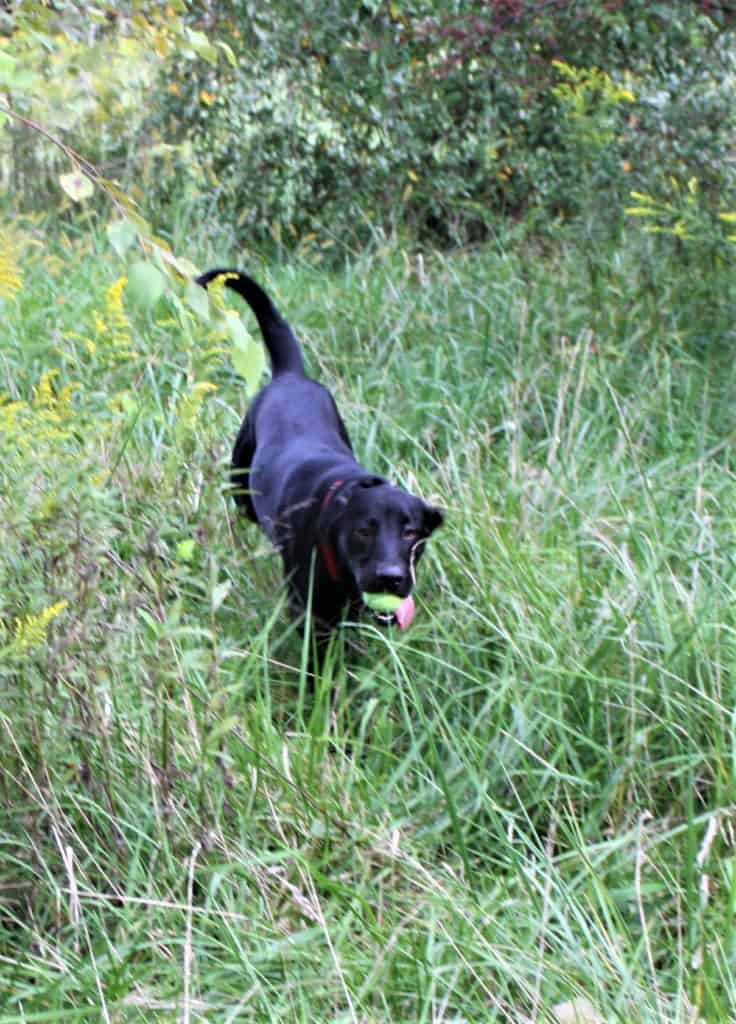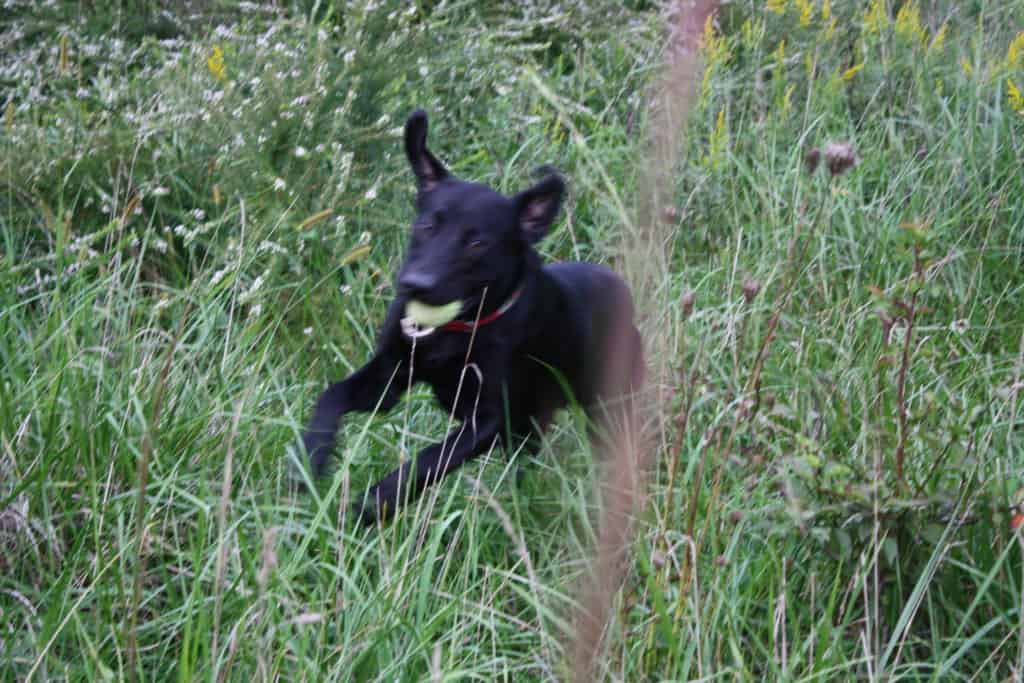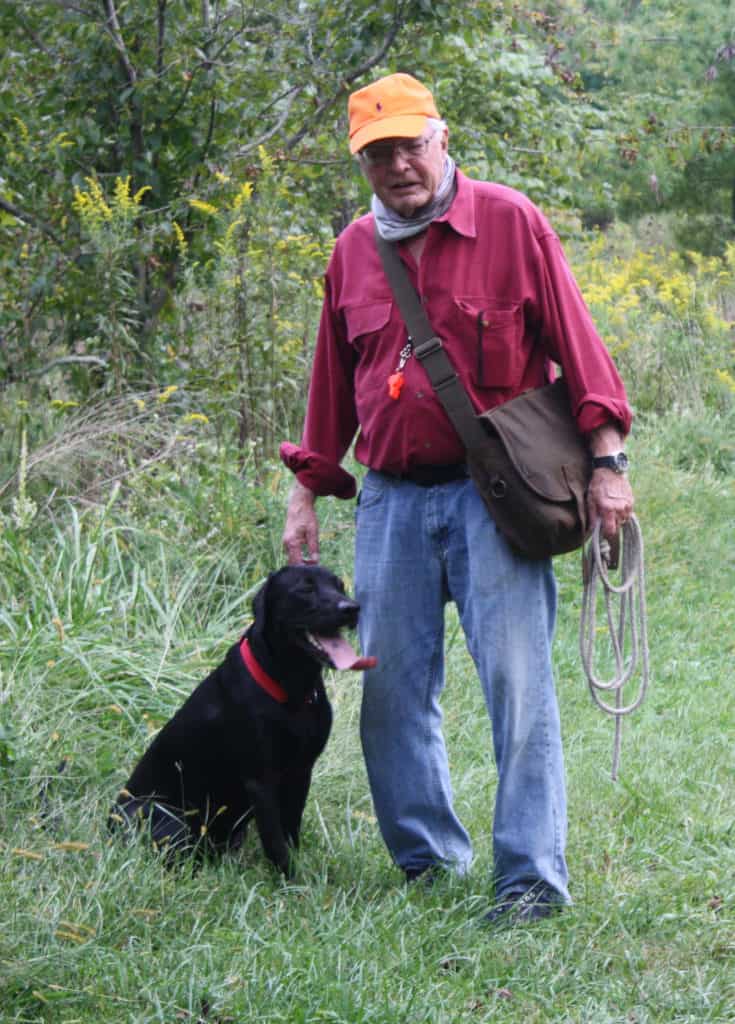Sporting Life
The Bobwhite Quail Game
By Dennis Doyle
Hobbes, my young black Lab, was bounding along through the thick thigh-high brush far off to my left when he hit the distinct odor of bobwhite quail. I saw him alert, slide to a stop, lift his head into the air to determine direction, then relocate, lowering his nose to search for more scent, deep in the brush.
It was his fifth alert of the day and when I saw him tense again, pausing a moment just to be sure, then lunge forward and gingerly grab his prey, I was elated. Bounding back through the blossoming autumn weed he held his prize proudly aloft and presented it to my hand.
I took the bright chartreuse tennis ball, moist with dog spit and bobwhite training scent, and placed it in my shoulder bag along with the five others he had already found. Hobbes was cleaning up on tennis balls again.
Earlier that morning I had left my pup imprisoned in the pickup a good distance from the field, while I randomly distributed about 15 balls, freshly anointed with training scent, well out of Hobbes’ line of sight. For his part Hobbes protested, howling loudly and mightily about being excluded from this part of the process.
After pitching the balls into the densest and most likely cover throughout the two-acre field, I was depending on my buddy to search them out. I had no idea, glancing back, where any one of those furry missiles landed but I had a lot of confidence in my partner.
Years ago, before the surrounding farms and fields had been sold, bought, divided and subdivided into new neighborhoods and shopping malls, I trained my bird dogs by running them in those very fields, with the permission of understanding farmers. Depending on Maryland’s plentiful native quail populations to inspire, the pups I raised instinctively and easily got the idea that there was plenty of game afoot and how to find it.
These days one has to travel far to find any kind of bucolic, upland landscape with bobwhite quail in residence. Once the most populous and popular game bird in the state, they have long disappeared from the wild places close to where I live. Development and modern agricultural practices have virtually eliminated the quail everywhere but in the furthest reaches of the state.
Though I now travel long distances to find a good number of my favorite game birds, I still need to acquaint my dog early and often with their scent, their habitat and just how the pup and I are going to work together to bag them. It’s a somewhat complicated operation that has to be simplified in order to practice nearby and often.
Thankfully a vacant overgrown piece of ground, a bag full of used tennis balls (Hobbes’ most favorite of all objects), various training scents (pheasant, grouse, quail, etc.), and my pup’s sense of endless play take care of that process. He never tires of busting brush to locate the odorous objects and deliver them back to my hand. Endless repetition is automatic because he knows I’ll always just take them out when he’s finished and hide them again. He has me trained.
In the process he’s also come to know just how far away he should range (about 25 yards) which direction to take (quartering the fields, always in front and methodically) and where to concentrate his attention (the thicker and nastier the better). He listens for my whistle (usually), changing directions at a single chirp, or going in a new direction at my pointing or promptly returning to me at multiple blasts.
He has also discovered, when first exposed to live quail, that the little buggers will explode into flight when he gets too close, and that they, occasionally, will fall to the ground at the sound of gunfire, and then he can again retrieve them. A happy coincidence, both in his opinion and mine.
Fishfinder:
As the temperatures have dropped the bite has improved remarkably for rockfish, bluefish, white perch, spot, mackerel and catfish, just about every fish in the Bay. To the south, from Point Lookout and toward the mouth of the Bay the bite for spotted seatrout and redfish is outstanding. This is the autumn feed-up. The chum bite is good for both rock and blues, with some broaching 24 inches. White perch are still in the shallows but not for long and they are feeding up heartily. If you can’t find them, try the channel edges at the trib mouths in 15 to 20 feet. The Norfolk spot and a few croaker are still here but will be heading back to the ocean soon, so get in on live lining while you can. Trolling for rock is excellent with small to medium bucktails but have some metal handy, like spoons and jigs with short wire leaders, in case the blues and Spanish show up. Crabbing is exploding everywhere and they’re big and heavy. It’s not going to get any better than this.




